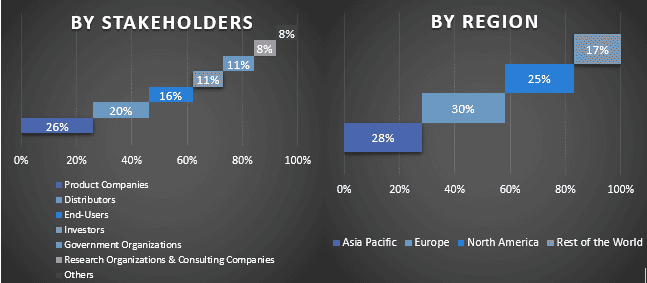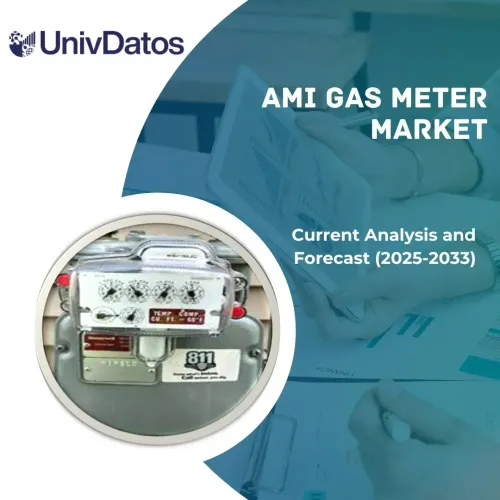- Home
- About Us
- Industry
- Services
- Reading
- Contact Us
Lithium Silicon Battery Market: Current Analysis and Forecast (2024-2032)
Emphasis on Capacity (<3,000 mAh, 3,000-10,000 mAh, and > 10,000 mAh); Application (Consumer Electronics, Automotive, Aerospace & Defense, and Medical Devices); Component (Cathode, Anode, Electrolyte, and Others); Region/Country.
![]()
Lithium Silicon Battery Market Size & Forecast
The Lithium Silicon Battery Market was valued at USD 4.8 Billion in 2023 and is expected to grow at a strong CAGR of around 30.9% during the forecast period (2024-2032) owing to rising adoption in automotive sector.
Lithium Silicon Battery Market Analysis
The lithium silicon battery market is rapidly emerging as a significant segment within the broader battery technology landscape. These batteries utilize silicon anodes, which offer a higher theoretical capacity compared to traditional graphite anodes used in lithium-ion batteries. This results in batteries with higher energy density, longer lifespan, and faster charging times. These attributes make lithium silicon batteries particularly attractive for applications in electric vehicles (EVs), consumer electronics, and renewable energy storage.
The primary driver for the adoption of lithium silicon batteries is their higher energy density compared to conventional lithium-ion batteries. This allows for longer-lasting batteries, which is crucial for electric vehicles and portable electronic devices. The market is characterized by substantial investments in research and development (R&D), aiming to overcome the challenges associated with silicon anode technology, such as silicon’s volumetric expansion during charging cycles. Key industry players, including both established battery manufacturers and innovative startups, are actively exploring and developing solutions to enhance the performance and commercial viability of lithium silicon batteries. Additionally, strategic partnerships and mergers and acquisitions are common as companies seek to strengthen their technological capabilities and market position.
The global shift towards electric mobility necessitates batteries that can offer extended range and faster charging times, making lithium silicon batteries an ideal solution due to their superior performance compared to traditional lithium-ion batteries. This demand is further fueled by stringent environmental regulations and governmental incentives aimed at reducing carbon emissions and promoting sustainable energy solutions. In addition, advancements in silicon anode technology, driven by extensive research and development efforts, are significantly enhancing the performance and stability of these batteries. The consumer electronics market also plays a crucial role, with growing expectations for longer battery life and quicker charging capabilities in devices such as smartphones, laptops, and wearable technology.
![]()
Lithium Silicon Battery Market Trends
This section discusses the key market trends that are influencing the various segments of Lithium Silicon Battery as identified by our team of research experts.
Government Policies Supporting the Lithium Silicon Battery Industry:
United States
The U.S. government has implemented several policies and initiatives to support the development and adoption of advanced battery technologies, including lithium silicon batteries. Key measures include:
Tax Credits and Subsidies: The federal government offers tax credits for electric vehicle (EV) purchases, which indirectly boosts demand for advanced batteries. For example, the Clean Vehicle Credit provides up to $7,500 for qualifying EV purchases.
Research and Development Funding: The Department of Energy (DOE) allocates significant funding for battery research through initiatives such as the Advanced Research Projects Agency-Energy (ARPA-E) and the Battery500 Consortium, which focuses on developing next-generation battery technologies.
Regulatory Support: Policies aimed at reducing carbon emissions, such as the Clean Air Act, encourage the transition to EVs and renewable energy storage solutions, increasing the demand for high-performance batteries.
China
China’s government has established comprehensive policies to promote the lithium silicon battery industry:
Made in China 2025: This initiative aims to enhance China’s manufacturing capabilities in high-tech industries, including advanced batteries. It includes substantial investments in R&D and the development of domestic battery manufacturing capabilities.
Subsidies and Incentives: The Chinese government provides subsidies for EV purchases and tax incentives for manufacturers of advanced battery technologies. These measures significantly boost the domestic market for lithium silicon batteries.
National Policies: Policies such as the New Energy Vehicle (NEV) mandate require automakers to produce a certain percentage of EVs, driving demand for advanced battery technologies.
European Union
The European Union (EU) has introduced various policies to support the battery industry:
European Battery Alliance (EBA): Launched by the European Commission, the EBA aims to create a competitive and sustainable battery cell manufacturing value chain in Europe. It supports projects across the battery value chain, from raw material extraction to recycling.
Green Deal and Fit for 55: These policies aim to reduce carbon emissions by promoting sustainable energy solutions, including the adoption of EVs and renewable energy storage. The EU provides funding and incentives to support the development and deployment of advanced battery technologies.
Research and Innovation Funding: Programs like Horizon Europe allocate significant funding for research and innovation in battery technologies, encouraging the development of next-generation batteries.
Japan
Japan also supports the lithium silicon battery market through various initiatives:
Subsidies for EVs and Charging Infrastructure: The Japanese government offers subsidies for EV purchases and the installation of charging infrastructure, which indirectly supports the battery market.
Research and Development Initiatives: Japan invests heavily in R&D for advanced battery technologies through programs like the New Energy and Industrial Technology Development Organization (NEDO), focusing on improving battery performance and sustainability.
Strategic Roadmaps: The Japanese government has outlined strategic roadmaps for the development of EVs and advanced batteries, setting targets for technological advancements and market adoption.
These government policies play a crucial role in accelerating the development, adoption, and commercialization of lithium silicon batteries, positioning various regions as leaders in the global transition towards sustainable energy solutions.
APAC is Expected to Grow with Significant CAGR During Forecast Period
The Asia-Pacific (APAC) region is a significant driver in the lithium silicon battery market, fueled by rapid industrialization, urbanization, and a strong push towards sustainable energy solutions. Countries like China, Japan, and South Korea are leading in the adoption and development of advanced battery technologies, including lithium silicon batteries. The substantial investments in research and development by major companies in these countries are driving innovations in silicon anode technology, enhancing battery performance and lifespan. China, in particular, plays a pivotal role due to its large-scale manufacturing capabilities and government policies aimed at reducing carbon emissions. The Chinese government has implemented various subsidies and incentives to promote electric vehicles (EVs) and renewable energy storage solutions, significantly boosting the demand for high-performance batteries. Moreover, the presence of major battery manufacturers and the availability of raw materials in the region further support the growth of the lithium silicon battery market.
![]()
Lithium Silicon Battery Industry Overview
The Lithium Silicon Battery market is competitive and fragmented, with the presence of several global and international market players. The key players are adopting different growth strategies to enhance their market presence, such as partnerships, agreements, collaborations, new product launches, geographical expansions, and mergers and acquisitions. Some of the major players operating in the market are Elkem, Advano, E-Magy, Enovix Corporation, NanoGraf Corporation, Sila Nanotechnologies, Inc., Group14 Technologies, Inc., Huawei Consumer Business Group, Targray, and XNRGI.
Lithium Silicon Battery Market News
In January 2024, Enovix and Group14 Technologies announced their collaboration to develop advanced lithium silicon batteries, leveraging Group14’s silicon-carbon composite SCC55® to enhance battery performance and efficiency.
In October 2023, Ionblox introduced lithium-silicon batteries capable of extreme fast charging, achieving 60% charge in 5 minutes and 80% charge in 10 minutes, significantly enhancing the range and efficiency of electric vehicles.
Lithium Silicon Battery Report Coverage
![]()
Reasons to buy this report:
- The study includes market sizing and forecasting analysis validated by authenticated key industry experts.
- The report presents a quick review of overall industry performance at one glance.
- The report covers an in-depth analysis of prominent industry peers with a primary focus on key business financials, product portfolios, expansion strategies, and recent developments.
- Detailed examination of drivers, restraints, key trends, and opportunities prevailing in the industry.
- The study comprehensively covers the market across different segments.
- Deep dive regional level analysis of the industry.
Customization Options:
The global Lithium Silicon Battery can further be customized as per the requirement or any other market segment. Besides this, UMI understands that you may have your own business needs, hence feel free to connect with us to get a report that completely suits your requirements.
Table of Content
Research Methodology for the Lithium Silicon Battery Analysis (2024-2032)
Analyzing the historical market, estimating the current market, and forecasting the future market of global Lithium Silicon Battery were the three major steps undertaken to create and explore the adoption of Lithium Silicon Battery in major regions globally. Exhaustive secondary research was conducted to collect the historical market numbers and estimate the current market size. Secondly, numerous findings and assumptions were taken into consideration to validate these insights. Moreover, exhaustive primary interviews were also conducted with industry experts across the value chain of the global Lithium Silicon Battery. Post assumption and validation of market numbers through primary interviews, we employed a top-down/bottom-up approach to forecasting the complete market size. Thereafter, market breakdown and data triangulation methods were adopted to estimate and analyze the market size of segments and sub-segments of the industry. Detailed methodology is explained below:
Analysis of Historical Market Size
Step 1: In-Depth Study of Secondary Sources:
Detail secondary study was conducted to obtain the historical market size of the Lithium Silicon Battery through company internal sources such as annual reports & financial statements, performance presentations, press releases, etc., and external sources including journals, news & articles, government publications, competitor publications, sector reports, third-party database, and other credible publications.
Step 2: Market Segmentation:
After obtaining the historical market size of Lithium Silicon Battery, we conducted a detailed secondary analysis to gather historical market insights and share for different segments and sub-segments for major regions. Major segments are included in the report as Capacity, Application and Component. Further country-level analyses were conducted to evaluate the overall adoption of testing models in that region.
Step 3: Factor Analysis:
After acquiring the historical market size of different segments and sub-segments, we conducted a detailed factor analysis to estimate the current market size of the Lithium Silicon Battery. Further, we conducted factor analysis using dependent and independent variables such as Capacity, Application and Component of the Lithium Silicon Battery. A thorough analysis was conducted of demand and supply-side scenarios considering top partnerships, mergers and acquisitions, business expansion, and product launches in the Lithium Silicon Battery sector across the globe.
Current Market Size Estimate & Forecast
Current Market Sizing: Based on actionable insights from the above 3 steps, we arrived at the current market size, key players in the global Lithium Silicon Battery, and market shares of the segments. All the required percentage shares split, and market breakdowns were determined using the above-mentioned secondary approach and were verified through primary interviews.
Estimation & Forecasting: For market estimation and forecast, weights were assigned to different factors including drivers & trends, restraints, and opportunities available for the stakeholders. After analyzing these factors, relevant forecasting techniques i.e., the top-down/bottom-up approach were applied to arrive at the market forecast for 2032 for different segments and sub-segments across the major markets globally. The research methodology adopted to estimate the market size encompasses:
- The industry’s market size, in terms of revenue (USD) and the adoption rate of the Lithium Silicon Battery across the major markets domestically
- All percentage shares, splits, and breakdowns of market segments and sub-segments
- Key players in the global Lithium Silicon Battery in terms of products offered. Also, the growth strategies adopted by these players to compete in the fast-growing market
Market Size and Share Validation
Primary Research: In-depth interviews were conducted with the Key Opinion Leaders (KOLs) including Top Level Executives (CXO/VPs, Sales Head, Marketing Head, Operational Head, Regional Head, Country Head, etc.) across major regions. Primary research findings were then summarized, and statistical analysis was performed to prove the stated hypothesis. Inputs from primary research were consolidated with secondary findings, hence turning information into actionable insights.
Split of Primary Participants in Different Regions

Market Engineering
The data triangulation technique was employed to complete the overall market estimation and to arrive at precise statistical numbers for each segment and sub-segment of the global Lithium Silicon Battery. Data was split into several segments & sub-segments post studying various parameters and trends in the areas of Capacity, Application and Component in the global Lithium Silicon Battery.
The main objective of the Global Lithium Silicon Battery Study
The current & future market trends of the global Lithium Silicon Battery were pinpointed in the study. Investors can gain strategic insights to base their discretion for investments on the qualitative and quantitative analysis performed in the study. Current and future market trends determined the overall attractiveness of the market at a regional level, providing a platform for the industrial participant to exploit the untapped market to benefit from a first-mover advantage. Other quantitative goals of the studies include:
- Analyze the current and forecast market size of the Lithium Silicon Battery in terms of value (USD). Also, analyze the current and forecast market size of different segments and sub-segments
- Segments in the study include areas of Capacity, Application and Component
- Define and analyze the regulatory framework for the Lithium Silicon Battery industry
- Analyze the value chain involved with the presence of various intermediaries, along with analyzing customer and competitor behaviors of the industry
- Analyze the current and forecast market size of the Lithium Silicon Battery for the major region
- Major countries of regions studied in the report include Asia Pacific, Europe, North America, and the Rest of the World
- Company profiles of the Lithium Silicon Battery and the growth strategies adopted by the market players to sustain in the fast-growing market
- Deep dive regional level analysis of the industry
Frequently Asked Questions FAQs
Q1: What is the current market size and growth potential of the Lithium Silicon Battery market?
Q2: What are the driving factors for the growth of the Lithium Silicon Battery market?
Q3: Which segment has the largest share in the Lithium Silicon Battery market by Application?
Q4: What are the emerging technologies and trends in the Lithium Silicon Battery market?
Q5: Which region will dominate in the Lithium Silicon Battery market?
Related Reports
Customers who bought this item also bought










